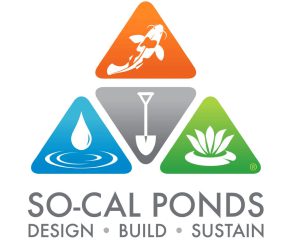
In order to produce and maintain a beautiful lawn, you should apply basic lawn care habits like properly mowing, fertilizing and watering. It is also important to ensure that basic elements can reach the soil beneath your grass which is why Lawn aeration can be an extremely vital factor to a healthy lawn.
WHAT IS LAWN AERATION?
In a nutshell, lawn aeration is the process of perforating your lawn’s soil with small holes to allow air, water and nutrients to penetrate the grass-roots. This can be simply done with special “shoes” that have spikes on the bottom, allowing you to pierce your lawn as you walk across it. So-Cal Ponds doesn’t prefer this method as it can actually further compact the soil around the holes you’re making. This still won’t allow the soil to breathe as easily as it should. So-Cal Ponds uses a much more complicated tool to aerate your lawn, mechanically removing small cores of soil and thatch (also known as “core aeration”).
WHY SHOULD YOUR LAWN BE AERATED?
Most lawns receive varying degrees of foot and vehicle traffic (including lawn mowers) throughout the year from your family, friends and even pets. This traffic adds to the compaction of the thatch and soil in your lawn, putting its health at risk.
Compacted soils have an excess of jammed particles in a certain volume or space. This prevents appropriate circulation of air, water and nutrients within the soil. Compacted soils have fewer air spaces which plants depend on to supply roots with much needed oxygen. This prevents roots from expanding, interferes with water filtration and disrupts nutrient uptake.
Thick and excessive lawn thatch or heavy organic debris buried under the grass surface can also starve the roots from essential elements. What is “thatch”? Thatch is the layer of dead and decaying plant tissue located between the soil surface and the grass. A thin layer of thatch is normal and healthy but an excessive thatch layer prevents air, light and water from reaching the turf’s root zone.
Core aeration, as mentioned above, removes cores from the thatch and soil which gives the compacted soil around these holes some room to collapse into them. This creates a looser soil arrangement allowing it to breathe easier and receive much needed elements. When the soil is aerated properly, there is more room for roots to expand and for helpful microorganisms to go about their business.
WHAT DOES FALL HAVE TO DO WITH LAWN AERATION?
Fall is a perfect time to aerate and de-thatch your lawn. Why is fall the perfect time to aerate you lawn, well I’ll tell you. All summer long your lawn has been growing and consuming nutrients depleting the soil of valuable vitamins. With the weekend BBQ’s and kids playing on your lawn the soil gets packed down and becomes denser. Dense soil does not allow oxygen and water to easily soak deep into the soil where the roots need it most. Aerating your lawn allows the rain, oxygen and fertilizer to make it down to the roots.
With hopefully a wet winter in Southern California the rain will give your lawn a good soaking. This is when proper lawn aeration will prove to save your lawn from possible damage during the rainy season. Dense soils can cause water to puddle and run off. Rain and irrigation water is able to soak farther into an aerated ground, and there’s less danger of runoff from such potentially harmful substances as fertilizer, pesticide and gray water.
Fall is a preferred season (along with Spring) for lawn aeration. Since Fall is here and hopefully some rain, having your lawn aerated this month or in the few immediately following is definitely the time to play it safe.
WHAT SHOULD YOU EXPECT?
Immediately after aeration, your lawn will be dotted with small plugs/cores pulled from the soil. Within a week or two, they break apart and disappear into the lawn. About 7 to 10 days after aeration, the plugs/cores will be filled with white, actively growing roots. This is a good sign that the grass is receiving additional oxygen, moisture and nutrients from the soil.
After aeration, your lawn should be able to go longer between watering without showing signs of wilt. With repeat aeration over time, your lawn will show enhanced heat and drought stress tolerance. Most lawns benefit from annual aeration. Lawns that receive this care should be healthier, more vigorous, easier to maintain and have fewer pest problems.
WHAT’S NEXT?
After your lawn has been aerated it is suggested to take the opportunity to add a high nutrient topsoil to the lawn. If a core aerator was used there will already be little soil plugs all over the lawn. Adding topsoil will slowly build the overall health of the thatch layer and root structure of the lawn building a healthier stronger lawn that will require less water and be more resistant to disease.
AERATING WITH SO-CAL PONDS
So-Cal Ponds can handle all of your lawn aeration and topsoil needs. We use a few hours or more (depending on your lawn size) to properly “core aerate” your lawn. Upon request, we will return the following day to apply the beneficial topsoil that we mentioned above, to strengthen the health of your lawn even further. Our prices vary depending on lawn size so give us a call to discuss the details and for a quote at (818) 541-9944.
You should also know that we offer sub surface irrigation installation and traditional sprinkler installation and repair. Having your sprinklers checked and inspected regularly can not only save your lawn from dying but also save you hundreds of gallons of water.